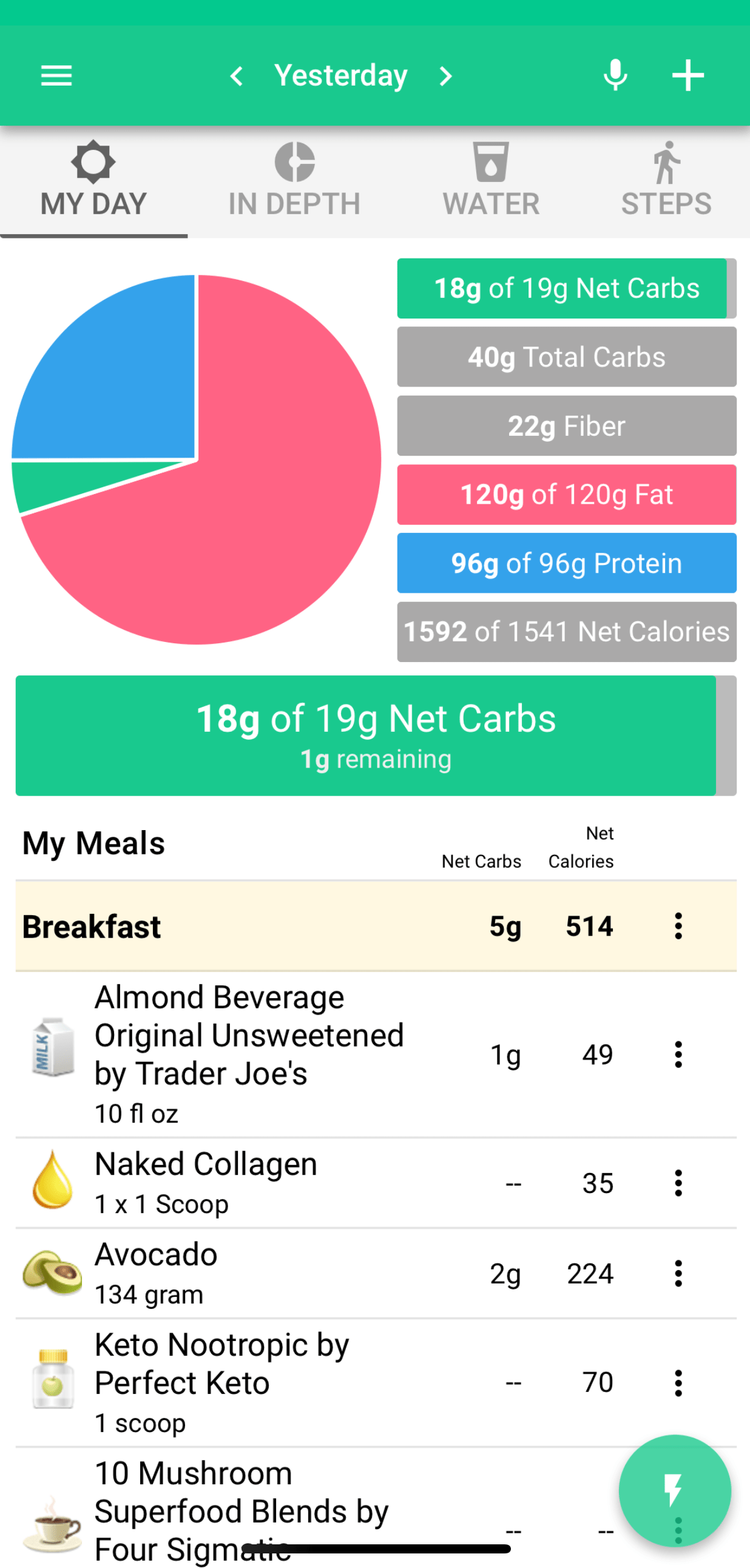What Are Keto Macros & The Best Keto Food Tracker App
/Calculating Keto Macros, monitoring Ketones, and using a Keto Marco tracking app probably sounds overwhelming especially if you are a Keto diet beginner.
But I promise that once you understand what the heck macros even are and find an easy to use Keto food tracker, you'll be a pro before you know it!
So let's dive into what are macros, what should your Keto macro ratios be for weight loss and how to use the best Keto macro tracking app!
What Are Macros And Why Do You Need to Track Them?
"Macros" is short for macronutrients, the three primary nutrients your body needs, protein, fats, and carbs. Tracking your macros on Keto is extremely important because if you want to reap the benefits of getting into ketosis and staying in ketosis, you need to find the right balance of carbs, protein, and fats.
In fact, studies have shown that eating too much or too little of a single macro will easily prevent you from progressing and leave you feeling fatigued, fog-brained and frustrated. (1)
Your body burns glucose (carbs) for energy, but on a Keto diet, you are training your body to burn stored fat for energy, by restricting your carb intake. To transition your body from a glucose burner to a fat burner you have to be eating the right portions of each macronutrient consistently.
Carbohydrates
Sugars and starches are classified as carbs. Fiber is also considered a carb, but fiber has a very minimal impact on blood sugar so it 'doesn't count towards your carb count.
When counting Keto macros, you only count Net Carbs. You take "Total Carbs" and subtract "Dietary fiber" to find the "Net Carbs."
TOTAL CARBS - DIETARY FIBER = NET CARBS
Fats
Fat is essential in your diet for energy, protecting your organs, absorbing vitamins and maintaining cell membranes. Since 70% of your food intake should come from fats on the Keto diet, it's vital for you to learn how to incorporate healthy fats into your diet.
Proteins
Proteins are the building blocks of your body. 'It's essential for preserving muscle, growth, tissue repair and essential hormones and enzymes.
On a Keto diet you need the right amount of protein for all of these biological processes, but keep in mind too much protein is just as bad as too little protein. Keto should not be a meat and cheese diet.
What Should Your Keto Macro Ratios Be for Weight Loss
I wouldn't overwhelm yourself with trying to make these calculations on your own, because there are plenty of MACRO calculators out there and any macro food tracker will also provide these numbers for you based on your profile you fill out when you create an account. However, it is important to understand how these numbers are determined.
If your goal is to lose weight, you need to be in a caloric deficit, which means you need to be burning more calories than 'you're consuming.
So 'let's take a step back and break this down a little more. Your body needs a certain amount of calories just to stay alive even if you sit on the couch all day.
This set amount of calories is called your Basal Metabolic Rate, AKA your metabolism.
You want to be consuming at least 200-300 calories less than your Basal Metabolic Rate for weight loss.
For a healthy weight loss that 'isn't going to leave you feeling starved I recommend sticking with a 20%-25% calorie deficit.
Like mentioned above the Keto diet is not a carnivore diet, but you need to eat enough protein to preserve your muscle mass or even increase your muscle mass depending on your fitness goals.
A good rule of thumb is to aim to consume 0.7–0.9 grams of protein per pound of your body weight.
So once you have determined your calorie intake based on basal metabolic rate and preferred calorie deficit, have determined the right amount protein needed to preserve your muscle, the remaining calories will be limited net carbs, and the rest of your dietary requirements will be met with fat.
Ketogenic diet Macro Ratios
25% of your calories should come from protein
5% of your calories should come from net carbs
70% of your calories should come from fats
Best Keto Marcos and Food Tracker App
The app that I find to be the most accurate, user-friendly and free is the Carb Manager App. Once you create your profile, it will collect information like age, height, weight, etc. And with that information, it will calculate your Keto Macros for you.
On the app you can either scan labels, search for generic things like "tomato" and easily add custom items. So if you make a recipe that has the nutrition information provided you can easily add it to your daily tracker.
Here are some Keto Recipes with macros listed for you to easily add in your food tracker
PRO TIPS for Tracking Keto Macros
Don't overwhelm yourself with hitting it spot on every single day. Yes, the goal is to get as accurate as possible, but 'don't obsess over it.
Monitor Ketones. If you are tracking macros, but not seeing the progress, you may want to consider monitoring your ketones. You should use Keto test strips before and after meals so you can identify something that is potentially kicking you out of ketosis.
Plan Ahead. If you try to add food as you go 'you'll like be struggling to find something that will fill your remaining macros at the end of the day. At least, in the beginning, I suggest planning your day of eating out. You can fill out exactly what 'you'd like to have and then adjust where needed for the perfectly balanced day of eating. Over time you will be more accurate at just winging it and adding as you go!
Use a Keto approved food list to plan meals. 'I've put together an approved food list and meal prep guide that lists Keto friendly options and an easy method for putting together balanced meals that will fit your macros each day.
Eat whole foods and avoid processed and pre-packaged foods. 'You'll quickly discover that processed and pre-packaged foods take up a lot of macros, which is an eye-opening way to discover how oversized our portion sizes typically are.






